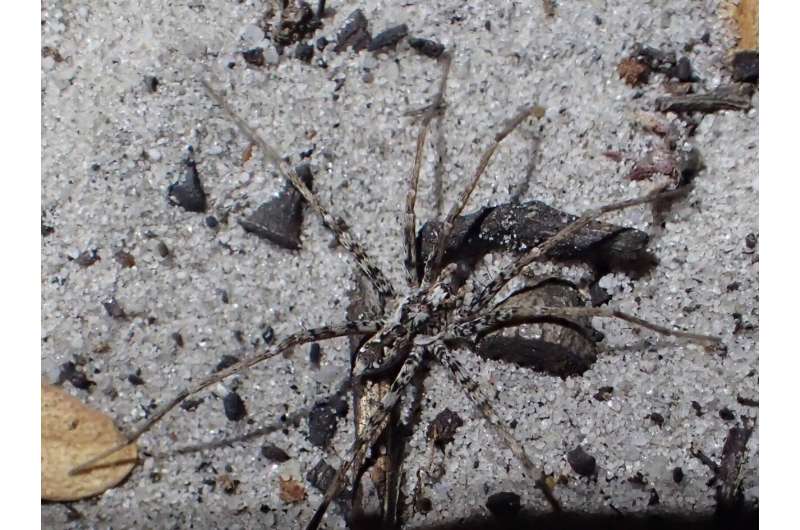This article has been reviewed according to Science X's editorial process and policies. Editors have highlighted the following attributes while ensuring the content's credibility:
fact-checked
peer-reviewed publication
proofread
Study describes 48 new species of spiders

A paper recently published in Zootaxa documents the 48 species of ground-hunting spiders from the family Miturgidae, which can be found across Australia, particularly in arid habitats in open eucalypt forest, brigalow, mallee, heath, and desert.
Lead author, Dr. Robert Raven, who worked on the decades-long project during his tenure with Queensland Museum Network, said originally in this group there were only three known species formally described.
"The newly described species have a body length of up to 10 millimeters, and are nocturnal and fast-moving spiders," Dr. Raven said.
"I was surprised at how many species were described in this paper, I knew there were a lot, but the number was far higher than I predicted."
Several of the species have been named in honor of notable scientists, curators and those involved within the arachnid community, including former Channel Ten "Totally Wild" presenter Ranger Stacey Thomson.
Ranger Stacey said it was a surprise and an honor to have a species named after her.
"During my time with, I spent many hours filming spider stories over the years with Robert and the team at Queensland Museum and it was always amazing," Ranger Stacey said.
"I learnt so much about arachnids, their biology and unique behaviors and I hope that these stories helped show children around Australia what incredible creatures spiders are."
Another species has been named in honor of Dr. Barbara Baehr who alone has described more spider species from Australia than any person in the past century. Another has been named after accomplished photographer, media presenter and arachnologist Caitlin Henderson, who collected the species that was named for her.
Queensland Museum Network CEO Dr. Jim Thompson said the process to formally describe species can be lengthy.
"Our taxonomists are like detectives in the work they do to formally describe new species to science," Dr. Thompson said.
"Quite often species are obtained and become part of the collection, but they may not be formally known to science. That's where the work of our researchers, scientists and honoraries come in.
"Sometimes this process can be quick, but other times, it can take decades and I commend the remarkable work of Dr. Raven and his colleagues on this project."
More information: Robert J. Raven et al, Revisions of Australian ground-hunting spiders VI: five new stripe-less miturgid genera and 48 new species (Miturgidae: Miturginae), Zootaxa (2023). DOI: 10.11646/zootaxa.5358.1.1
Journal information: Zootaxa
Provided by Queensland Museum




















